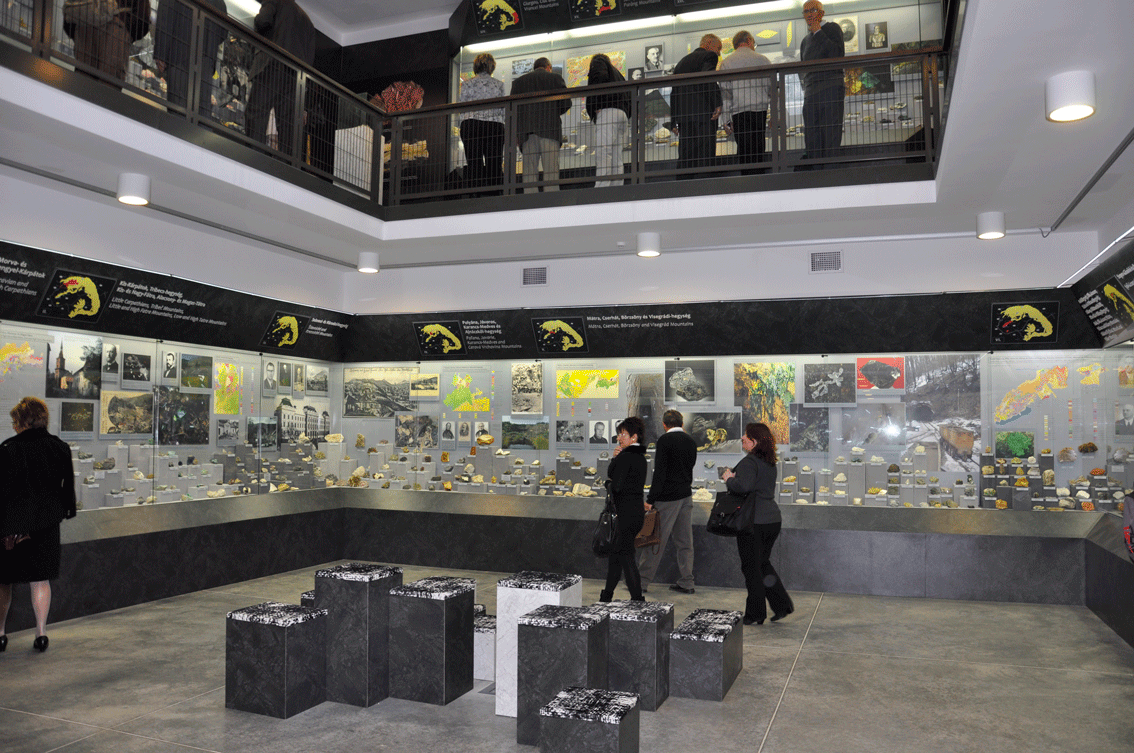Our Story
Story of the exhibition building
The village of Bükkábrány is situated 25 km as the crow flies from Miskolc in south-southeast direction. The extraction of lignite, which has major importance for the national economy, has been continuous since 1985. In the open-pit mine, in 2007, a part of the world’s oldest uprightly preserved bald-cypress forest was found at a depth of about 65 meters, the trees of which have not fossilized. A total of seventeen trunks have spent the last 7 million years sealed away from light and atmospheric oxygen, ensuring that their original woody structure and organic matter have hardly changed comparing to their living state.
As a result of the rescue operation, which had lasted nearly three months, four fossil trunks of 2.5 to 4.5 tonnes were transported to the Herman Otto Museum in Miskolc, where their conservation started immediately. At the same time, recognizing the great importance of the fossils internationally, the idea of building a new exhibition building was born. The partially submerged, two-storey, almost 900 m2 “Pannon Sea Museum” exhibition building opened in November 2013 with two permanent scientific exhibitions. The exhibition "On Trails of Primitive Forests–The Bald-Cypress Forest of Bükkábrány and Its Epoch" introduces the terrestrial and aquatic flora and fauna, geological development of the Miocene geological age (23-5.3 million years) based on the history of the ancient trees and contains many interactive elements.
Visitors can view the fossils of the Rudabánya palaeontological site in a separate room, including the remains of Rudapithecus hungaricus, a key ape that is important for human evolution. Under the pretext of this, the exhibition summarizes the history of mankind's development up to and including the Upper Paleolithic (11.600 years ago).
The exhibition “Minerals of the Carpathians” features a thousand of the 1.300 mineral species known so far from the mountain range of about 1.500 km. Thanks to the regular and planned collection development, the Herman Ottó Museum has one of the largest mineral collections in Hungary (approximately 40.000 specimens). In his collection you can also find a large number of specimens from the Carpathians over the country border.
From 2019, the offer of the Exhibition Building was supplemented with a permanent exhibition entitled “In the Land of Dinos - MesoZOOic”, which has been placed in the former Conference Room, in its Gallery and in the Screening Room. The new exhibition, which, like the previous ones, is bilingual, interactive, family- and child-friendly, guides visitors to the age of dinosaurs, that is the Mesozoic (251-66 million years ago), through a unique visual display. The 13 separate thematic units (Geodynamics, Reproduction, Nutrition, Extinctions, History of Aviation, etc.) try to present not only the everyday lives of the popular reptiles, but also that of their animal and plant contemporaries. All of these are embedded in the story of an imaginary time-traveling expedition. The unspoken motto of the exhibition is: “Touch it! Move it! Open it! Smell it! Play!
Collection development
The opening of the new building, which houses exhibitions of natural sciences, also provided an opportunity to re-establish the collection of natural sciences, which had been closed down decades earlier. It was named Pannonian Sea Repository of Geographical and Natural History. With the creation of this, the museum aims to collect, research, preserve and regularly present the geological and paleontological finds of the Tertiary and Quaternary periods of the Earth's history. From 2020, the repository, together with the Mineral Repository, is part of the Department of Natural History of the Herman Ottó Museum.
